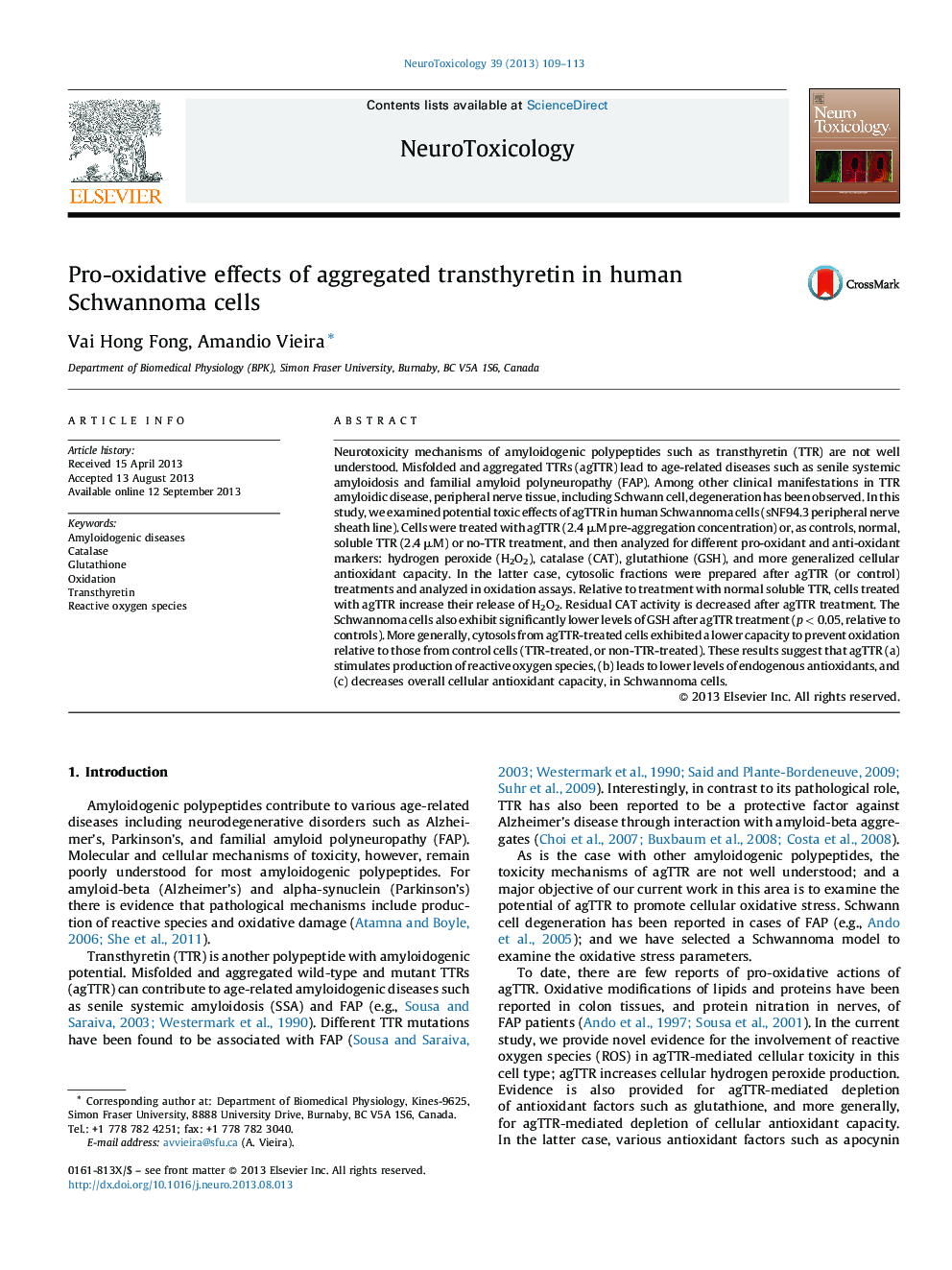| Article ID | Journal | Published Year | Pages | File Type |
|---|---|---|---|---|
| 2589711 | NeuroToxicology | 2013 | 5 Pages |
Neurotoxicity mechanisms of amyloidogenic polypeptides such as transthyretin (TTR) are not well understood. Misfolded and aggregated TTRs (agTTR) lead to age-related diseases such as senile systemic amyloidosis and familial amyloid polyneuropathy (FAP). Among other clinical manifestations in TTR amyloidic disease, peripheral nerve tissue, including Schwann cell, degeneration has been observed. In this study, we examined potential toxic effects of agTTR in human Schwannoma cells (sNF94.3 peripheral nerve sheath line). Cells were treated with agTTR (2.4 μM pre-aggregation concentration) or, as controls, normal, soluble TTR (2.4 μM) or no-TTR treatment, and then analyzed for different pro-oxidant and anti-oxidant markers: hydrogen peroxide (H2O2), catalase (CAT), glutathione (GSH), and more generalized cellular antioxidant capacity. In the latter case, cytosolic fractions were prepared after agTTR (or control) treatments and analyzed in oxidation assays. Relative to treatment with normal soluble TTR, cells treated with agTTR increase their release of H2O2. Residual CAT activity is decreased after agTTR treatment. The Schwannoma cells also exhibit significantly lower levels of GSH after agTTR treatment (p < 0.05, relative to controls). More generally, cytosols from agTTR-treated cells exhibited a lower capacity to prevent oxidation relative to those from control cells (TTR-treated, or non-TTR-treated). These results suggest that agTTR (a) stimulates production of reactive oxygen species, (b) leads to lower levels of endogenous antioxidants, and (c) decreases overall cellular antioxidant capacity, in Schwannoma cells.
